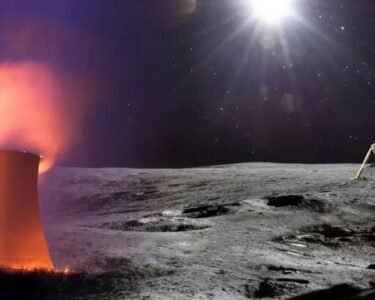Astronomers and researchers are once again at odds following the publication of a controversial paper that speculates the recently discovered interstellar object 3I/ATLAS could be a cloaked piece of extraterrestrial technology — potentially even hostile in nature.
The paper, submitted to the preprint server arXiv on July 16 and yet to undergo peer review, revives a familiar debate last sparked by the discovery of ‘Oumuamua in 2017 — the first known object to visit our solar system from interstellar space.
Discovered on July 1, 3I/ATLAS is traveling at over 130,000 miles per hour (210,000 km/h) and is expected to pass close to the sun by the end of October. The object’s expansive cloud of gas and dust — known as a coma — has led most astronomers to classify it as a comet. In fact, it’s the largest known interstellar object ever observed, measuring around seven miles (11 kilometers) across, with a coma spanning more than 15 miles (24 kilometers).
However, the team behind the controversial paper, which includes prominent Harvard astronomer Avi Loeb, poses an alternate theory. They suggest the object’s trajectory and speed might not be purely natural — but possibly intentional, indicating it could be an alien probe designed to quietly monitor our solar system.
Though the authors frame their hypothesis as a theoretical exercise rather than an outright claim, they question whether 3I/ATLAS’s peculiar movement — particularly its angle of entry into the solar system and its relatively high velocity — might be strategic. The object’s course brings it close to Jupiter, Mars, and Venus, and at its closest point to the sun in late October, Earth-based telescopes will not have a direct view — a detail Loeb notes could be a tactic to avoid close observation.
Loeb, who leads the Galileo Project (an effort aimed at finding evidence of alien technology), is no stranger to controversy. He previously made headlines for asserting that ‘Oumuamua could be an artificial craft, and later for a 2023 ocean expedition he led in search of alien material, which many in the scientific community have since debunked.
Still, Loeb insists the discussion about 3I/ATLAS is worth having. “If it turns out to be a piece of alien tech — especially from a civilization hiding its presence — the consequences could be immense,” he wrote in a blog post. He tied the possibility to the “dark forest” hypothesis, which suggests intelligent alien civilizations stay silent to avoid attracting attention from predators.
But experts in planetary science and astronomy have largely dismissed the alien hypothesis surrounding 3I/ATLAS.
“There’s overwhelming observational evidence showing this is a comet,” said Darryl Seligman, an astronomer at Michigan State University and one of the first to publish scientific analyses of 3I/ATLAS. “Its behavior matches what we’d expect from a large icy body entering our solar system from another star.”
Samantha Lawler, an astronomer at Canada’s University of Regina, echoed that sentiment. “These types of wild claims are frustrating. They distract from real scientific progress and mislead the public,” she said.
Scientists also argue it’s too early to draw conclusions about the chemical composition of the object. While researchers haven’t yet detected “volatiles” — substances like water, carbon dioxide, or ammonia typically found in comets — that’s to be expected given the object’s current distance from the sun. As it approaches, experts believe more definitive data will emerge.
Despite this, the alien angle continues to generate buzz, due in part to Loeb’s public persona and the mystery surrounding interstellar visitors.
“Let’s be clear,” Seligman said. “There is zero concrete evidence this is anything but a natural comet.”
Even Loeb concedes that the alien-tech theory is unlikely, writing, “The most probable explanation is that 3I/ATLAS is a standard interstellar object. But science progresses by considering and testing all possibilities.”
While 3I/ATLAS races closer to the sun, researchers will be watching closely — not for signs of alien hardware, but for insights into the nature and origin of one of the oldest and most mysterious visitors to our solar system.
Image Source: Google
Image Credit: Respective Owner




